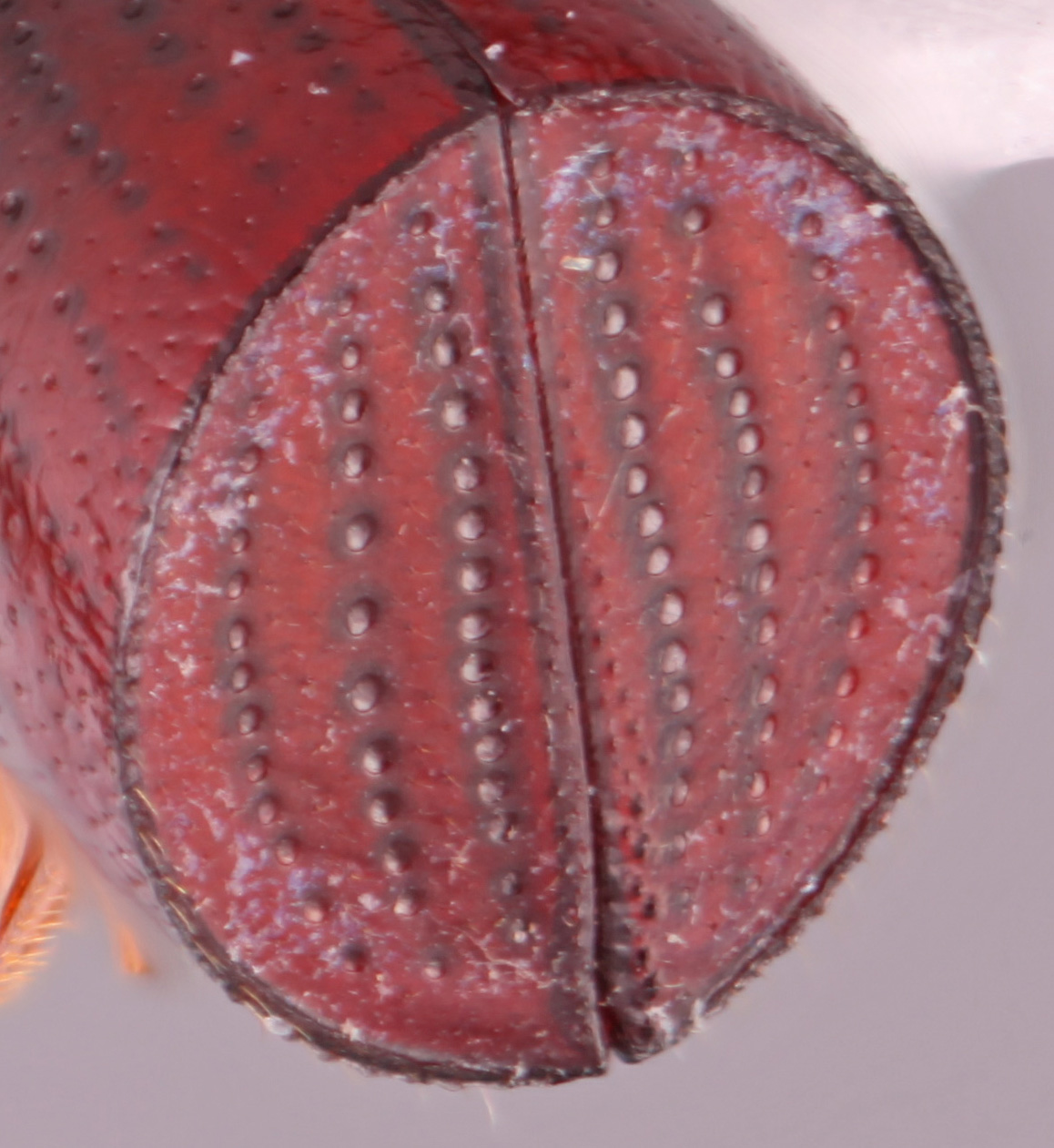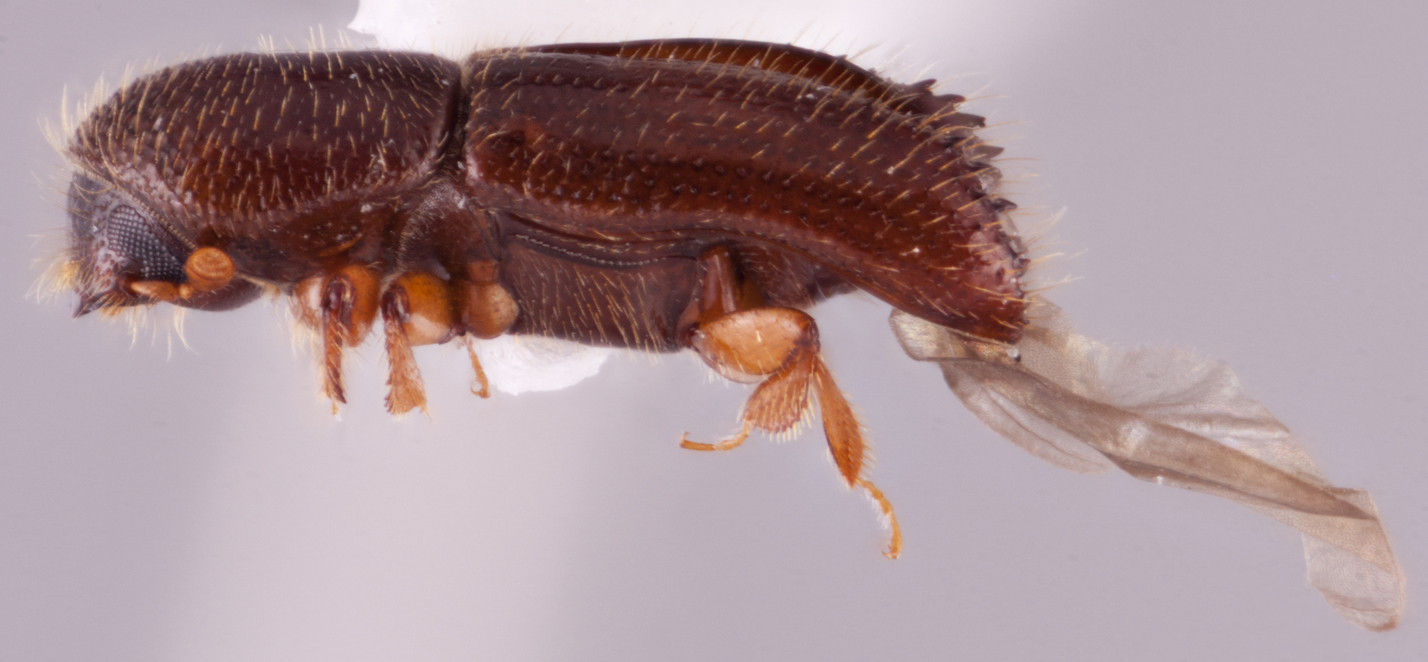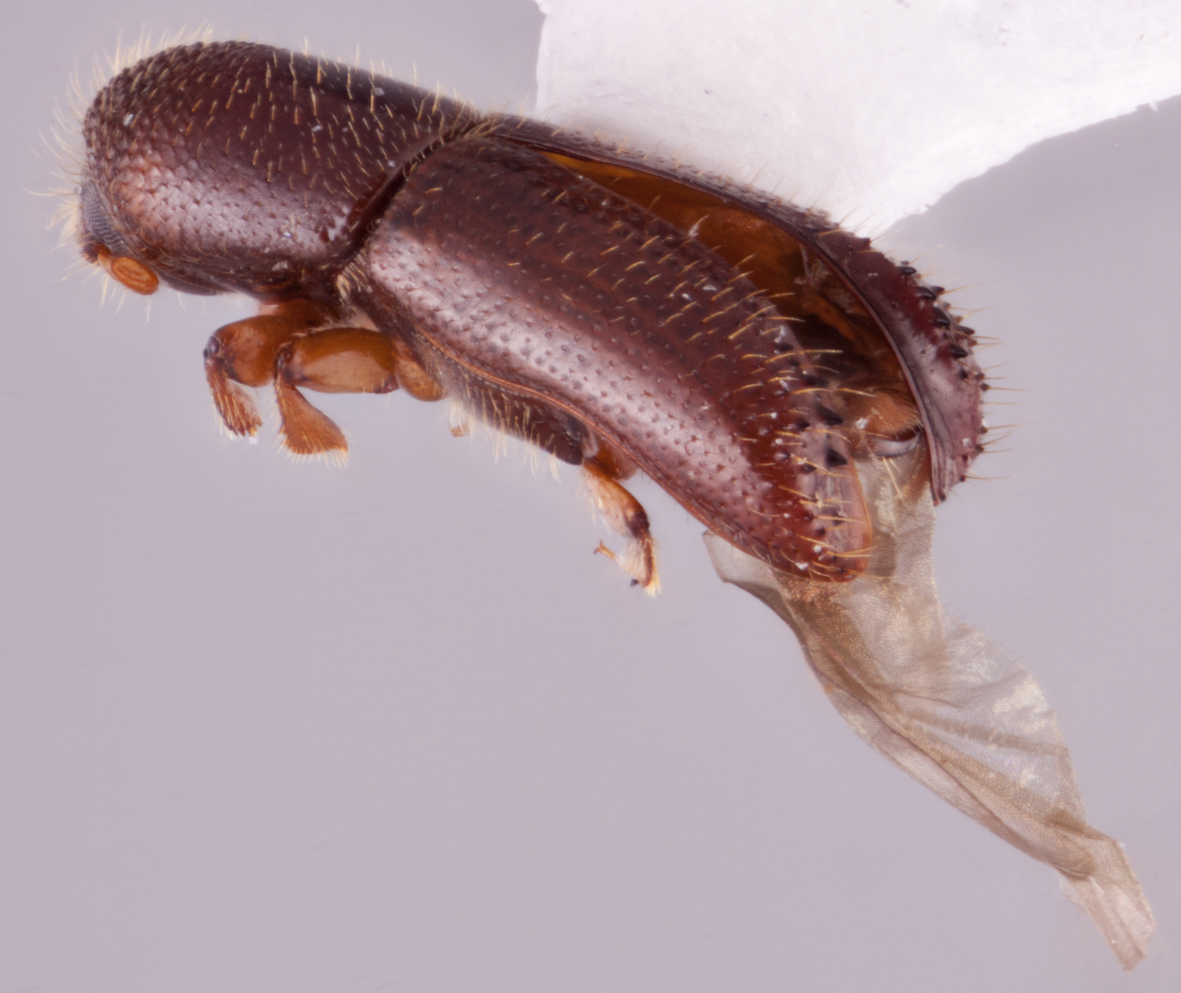Xyleborinus schaufussi
|
Xyleborinus schaufussi lateral; R.K. Osborn |
|
Xyleborinus schaufussi dorsal; R.K. Osborn |
|
Xyleborinus schaufussi declivity; R.K. Osborn |
|
Xyleborinus schaufussi frontal; R.K. Osborn |
Taxonomic history
Xyleborus schaufussi Blandford, 1894b: 117.
Xyleborinus schaufussi (Blandford): Wood and Bright, 1992: 816.
Synonyms
Xyleborus kraunhiae Niisima, 1910: 14. Smith et al., 2018b: 397.
Diagnosis
2.5−3.1 mm long (mean = 2.73 mm; n = 5); 3.21−3.57 times as long as wide. This species is distinguished by the posteriorposterior:
toward the rear end; opposite of anterior
 margin of elytraelytron:
margin of elytraelytron:
the two sclerotized forewings of beetles that protect and cover the flight wings
broadly rounded; declivitaldeclivital:
pertaining to the elytral declivity
face with interstriaeinterstria:
longitudinal spaces along the elytra between the striae, which is not as<br />
impressed and bear smaller punctures.
 1 and 2 unarmed by tubercles; elytralelytral:
1 and 2 unarmed by tubercles; elytralelytral:
pertaining to the elytra
declivitaldeclivital:
pertaining to the elytral declivity
face strongly sulcatesulcate:
deeply furrowed or grooved
; large body size; laterallateral:
pertaining to the side
 declivitaldeclivital:
declivitaldeclivital:
pertaining to the elytral declivity
margins strongly elevated, costate, bearing 4−6 pairs of large sharply pointed backwardly hooked denticlesdenticle:
a small tooth, the sides of which are equal and the tip is above the middle of the base (often asymmetric); sulcatesulcate:
(often asymmetric); sulcatesulcate:
deeply furrowed or grooved
area of declivitydeclivity:
downward slope of either the pronotum or elytra
 impunctate, shagreenedshagreened:
impunctate, shagreenedshagreened:
covered with a closely-set roughness, like shark skin  , dull; and elongate body form.
, dull; and elongate body form.
May be confused with
Xyleborinus artestriatus, X. echinopterus, X. ephialtodes, X. kwangruengensis, X. octiesdentatus, X. speciosus, and X. spinipennis
Distribution
China (Guizhou, Sichuan), Japan, Taiwan
Host plants
recorded from Millettia (Fabaceae) (Niisima 1910Niisima 1910:
Niisima Y. 1910. Die Borkenkaefer Nord- und Mittel-Japans. Transactions of the Sapporo Natural History Society 3: 1-18.), Fagus (Fagaceae) and Symplocos (Symplocaceae) (Beaver and Liu 2010Beaver and Liu 2010:
Beaver RA, Liu L-Y. 2010. An annotated synopsis of Taiwanese bark and ambrosia beetles, with new synonymy, new combinations and new records (Coleoptera: Curculionidae: Scolytinae). Zootaxa 2602: 1-47. https://doi.org/10.11646/zootaxa.2602.1.1), and Betula (Betulaceae) (Smith et al. 2020bSmith et al. 2020b:
Smith SM, Beaver RA, and Cognato AI. 2020b. A monograph of the Xyleborini (Coleoptera, Curculionidae, Scolytinae) of the Indochinese Peninsula (except Malaysia) and China. ZooKeys 983: 1-442. https://doi.org/10.3897/zookeys.983.52630)
DNA data
Sequences available for COI and CAD.





